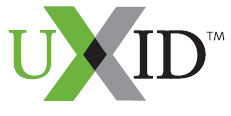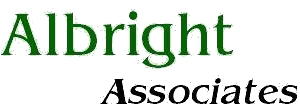
FAQs (frequently asked questions)
- What does UXID™ stand for?
- What is the UXID™ technology?
- What do I need to do to register with the netSafeID™ system?
- What is the benefit of using UXID™ technology?
- How do I use my SafeID™ username?
- What is the netSafeID™ system?
- How do I use the netSafeID™ system?
- What is the edSafeID™ system?
- How do I use the edSafeID™ system?
- What is the medSafeID™ system?
- Why does the government want national IDs?
- Should I be worried about identity theft?
- How do criminals gain access to personal data and accounts so easily?
- How can UXID™ technology help prevent identity theft?
- What is the relationship between UXID™ technology, and the netSafeID™, edSafeID™, and medSafeID™ systems?
- If someone steals my driver’s license or copies my passport, can these be used to get a SafeID™ Identifier?
- How does the netSafeID™ system protect children and teens on the Internet?
- What do I need to do to add the netSafeID™ system to my website?
UXID™ stands for Universal Anonymous EXchange IDentifier.
UXID is a proprietary, patent pending technology developed to provide a universal means to collect and exchange information confidentially and anonymously. It is universal in that it can be used by all people in a country or in the world.
Bring your identity documentation (driver license, passport, birth certificate) to one of our authorized registration centers. We will then issue your SafeID username and password.
UXID technology provides many useful anonymous data exchange services, while protecting the confidentiality and privacy of your transactions and personal data.
You use your SafeID username to view and change information on your SafeID account. You use your SafeID username and password the same way you normally use a log-in ID and password.
The netSafeID system is our website verification service. If you prove your age to us by presenting a birth certificate, driver’s license, or passport, we can act as a trusted third party and tell registered websites if your age and gender are appropriate for their site. We will not identify you or disclose your actual age to the site.
Your netSafeID username and password are used to verify that you meet the age guidelines of registered websites. You use your netSafeID username and password to enter these websites the same way you normally use a log-in ID and password. The service does not disclose your identity or password when it verifies your age and/or gender for the website.
The edSafeID system is our anonymous educational data collection service. The edSafeID system is designed to allow schools and government organizations to collect accurate data on graduation rates and student transfers, or other school related information. All data are kept strictly anonymous and confidential. This service is an alternative to current school and government data collection practices, which store a student’s name, SSN, address, and other personally identifying information with the student’s educational history.
The edSafeID system is used with your consent by participating schools to collect data. Only fully authorized representatives with access rights approved by the school and the service are allowed to process your edSafeID identifier, and they can only view data they collect at their own school. All student and school data are anonymized before they are shared outside the school that collected it.
The medSafeID system is designed for animal breeders, owners, and veterinary professionals who need to track the long-term progress and movement of animals and to conduct scientific evaluations of disease frequency, treatment, breed characteristics, or other types of studies. The medSafeID system provides a framework on which to exchange and consolidate information from any country across any time span—while protecting the confidentiality of animal owners and veterinary professional records. There are various ways you can use the medSafeID system to collect data on animal movement and to conduct population studies. For more information, contact one of our customer service representatives.
The government and other organizations need comprehensive data on individuals for informed decision and policy making. The use of national IDs has been proposed for this purpose. These proposals have met with significant legal challenges arising out of concerns relating to identity theft, data confidentiality, civil liberties, and privacy rights. However, the need for the data still exists and the government continues to pursue adoption of national IDs for citizenship, driver’s licenses, student IDs, and other applications. UXID technology provides a way to collect data anonymously and confidentially without the use of national IDs, such as a SSN, which expose you to the risk of identity theft and loss of privacy.
According to a recent studies, if you are between the ages of 18 and 24, you are in the group most likely to be victimized by identity theft. In this age group, one person in 19 has reported identity theft problems in the past year, as opposed to one in 27 for other age groups. Young people are more likely to use wireless “hot spots” in cafés, and to make postings in social networking sites (which capture birth dates, pet names, etc., which can be used by thieves to guess passwords). This makes them especially vulnerable to cyber-criminals.
It’s easy for anyone to use information gained merely by looking at many common ID cards. As a result, people are at risk whenever they use their SSN, driver’s license, credit cards, debit cards, and health insurance cards. These cards are easily copied or scanned, and re-sold. This creates enormous potential for misuse, privacy breaches, and identity theft. Sites like iaaca.com (shorthand for International Association for the Advancement of Criminal Activity), shadowcrew.com, and carderportal.com operate blatantly on the Internet reselling stolen Gold Visa cards, MasterCards, and insurance IDs for $50-100. Stolen health care IDs are being used with increasing frequency to obtain “free” health care under someone else’s name.
Unlike a SSN, UXID technology puts you in control of who is able to view and access your data. First, it does this by only providing services to registered subscribers and at their explicit request.
Second, in most cases data exchange is anonymous. In some instances, subscribers may request that the service provide non-anonymous data exchange. For example, some communicating subscribers might want our service to confirm that they are all members of a particular group (such as students at a participating school). In this case, the service will advise subscribers that the data exchange may include personally identifiable information (i.e., they all go to University X) and will obtain their consent before proceeding.
Third, you must use both your SafeID and a password when you interact with the service. If someone discovers your SafeID, without the password, they cannot do anything with it. An even if someone learns your SafeID and password, it gives them access to very limited information, which cannot be used to access financial accounts or personal data, or to make purchases.
15. What is the relationship between UXID™ technology, and the netSafeID™, edSafeID™, and medSafeID™ systems?
Different types of SafeID identifiers are issued for different types of data exchange services. Each type of SafeID identifier has a different code and there is no way to guess one from the other. For example, your netSafeID identifier might be "123 ABC 456" and your edSafeID identifier might be "F37 2D4 3F1". This is a key advantage to SafeID identifiers. If someone steals one of your SafeID identifiers (e.g., a netSafeID or edSafeID identifier) and its corresponding password, it doesn’t compromise the others. UXID is the underlying technology used when data is exchanged using a SafeID identifier. UXID technology helps keep your data anonymous and confidential.
16. If someone steals my driver’s license or copies my passport, can these be used to get a SafeID™ Identifier?
When you register with our service, your photo ID or physical identity is checked. Your identical twin might be able to impersonate you, but others will find it difficult. If you know your identity documents have been stolen, you can report this to the service to stop someone from trying to obtain a SafeID identifier with them—and so that your SafeID identifier can be disabled and a new one issued to you.
People can easily misrepresent themselves on the Web, thereby gaining access to content that is not age-appropriate. Congress passed the Child On-line Protection Act (COPA) to try to shield the young from inappropriate material, but this legislation has been impossible to implement without the netSafeID system technology. Up to now the main attempt to comply with COPA has been by filtering, which can be defeated or bypassed by savvy teens and cyber-criminals.
The netSafeID system verifies the age of website visitors when they log-in. Kids can't enter adult sites with a netSafeID identifier because they are pre-screened. Parents who wish to protect their children against online predators may register them with our service, so websites can limit a child’s exposure to other age-appropriate visitors on the site. Purveyors of adult content and services may use the service to demonstrate due diligence in keeping minors off their website. The law is greatly concerned about persons “under the age of consent.” If websites offering adult content or services want to keep government investigations of their operations at bay, use of our service demonstrates that they have done everything possible to assure the safety of their site. The public has a right to view adult content and websites have a right to offer it. But when websites use the netSafeID system it shows they are committed to keeping it away from children.
UXID™ stands for Universal Anonymous EXchange IDentifier.



